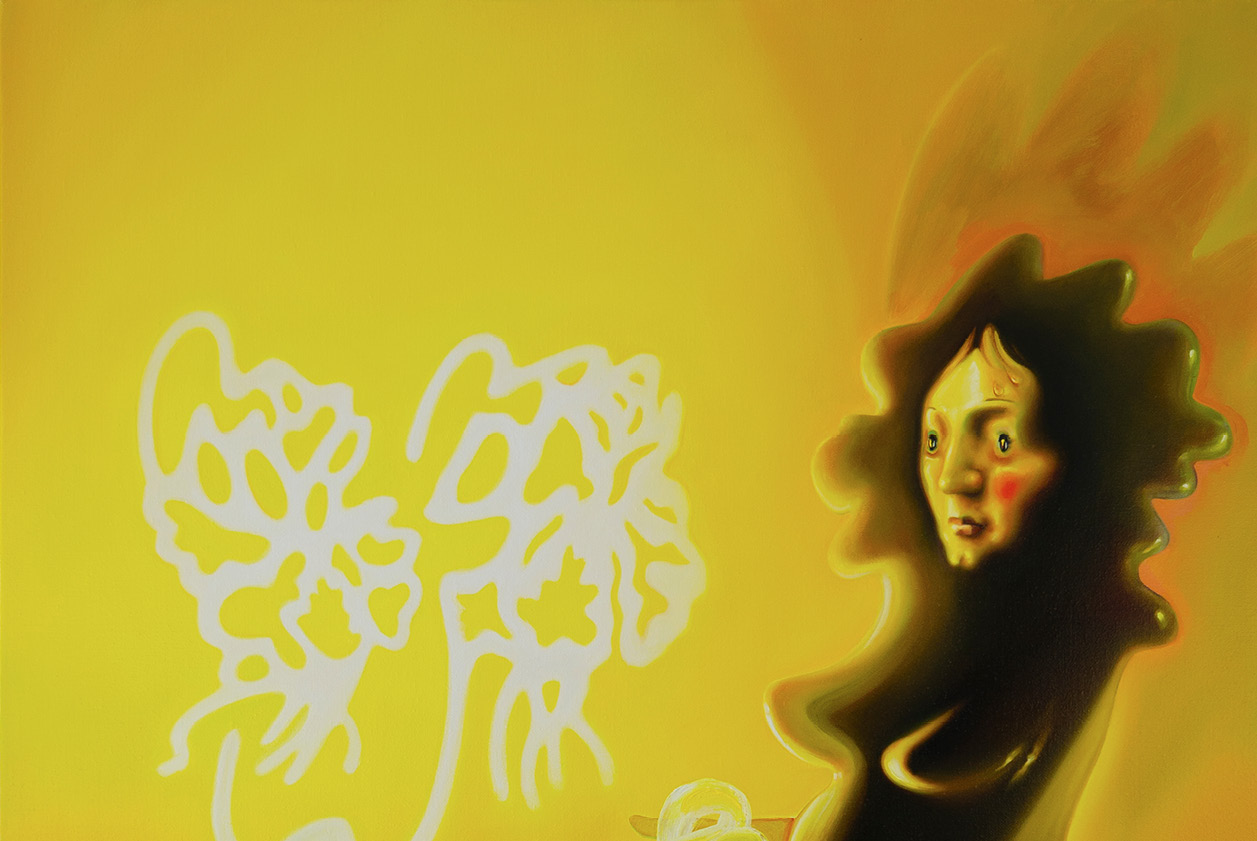Your cart is currently empty!
Lauren Satlowski

Lauren Satlowski’s four new paintings at Odd Ark situate us squarely in our anxious feminist moment. Their landscapes are creepy, with tinges of the natural; their delicious surfaces bounce the gaze around like the mise en scène for Spielberg’s child-android in A.I. and their colors flare like a Kubrickian operatic interlude.
Each work features a female caricature, humorous and strange, distinctly out of place yet a fitting “object” in her element. In Feather Bowling (all works 2018), the first of three 40” x 30” panels, a Venus of Willendorf/astronaut figure emerges from a dark primordial slime. A golden light kisses her body’s surface, like the afterglow of a neon sign that makes puddles green at night. The amount of refractive surfaces and colors are slippery for the eye, and in looking for meaning one falls into pits or fissures of light. A holographic cartoon of a woman’s face floats on the object’s surface. On the figure’s arm we can barely register the reflection of… is it the painter? Or is Satlowski rendering painting itself as a character?
In Seagull, a vacant doll perches on a rock as the Western or Martian sun sets on an infinite landscape we cannot see. The doll’s frozen face is engulfed like an Arctic explorer in a puffy pewter-colored hood, dead to light and decorated with nineteenth-century floral flourishes. Her Amelia Earhart red aviator-scarf shimmers triumphantly out of focus, and her Captain Hook appendage is shocking. We stare but are non-essential. She is the survivor.
The helmet flowers from Seagull are reprised as a conjoined twin figure on a single stem in 91.5 Los Angeles, a nod to the USC classical music radio station. The neon yellow flowers are more evocatively figural than the black costumed woman with pendulous breasts onto whose hand the flowers weep glowing fragments. Satlowski handles this light, and specifically its autonomy, in a way that marvels at paint’s ability to be more than the light it reflects. It is somehow essential yet mutable; we project meaning there, but its materiality escapes.
Satlowski’s figures, in these paintings as well as in her gouache on paper paintings in the back room, appear as ciphers in a fluid medium. Each painting refutes a simple answer about identity and fixability by emphasizing the hypnotic element of paint and its psychedelic, transmutable potential. In several of the gouache on paper works—pages from a future or past book—this relationship to light is amplified by a naked and hunched female cartoon who fishes with her hands through eddies of rainbows. The moment of apprehension is elusive and maybe psychotic, as in the smaller painting Just Because You’re Paranoid Doesn’t Mean They’re Not All Out to Get You, when an examination of Satlowski’s “Id” character “Robber Girl,” who carries a cartoon sack over her shoulder, reveals it’s painted on a thin white veil covering an image to haunt law-and-order types, The Joker.
This is Satlowski’s humor and her critical strength. She’s playing around, but the game is serious and has implications for both painterly and contemporary political issues.